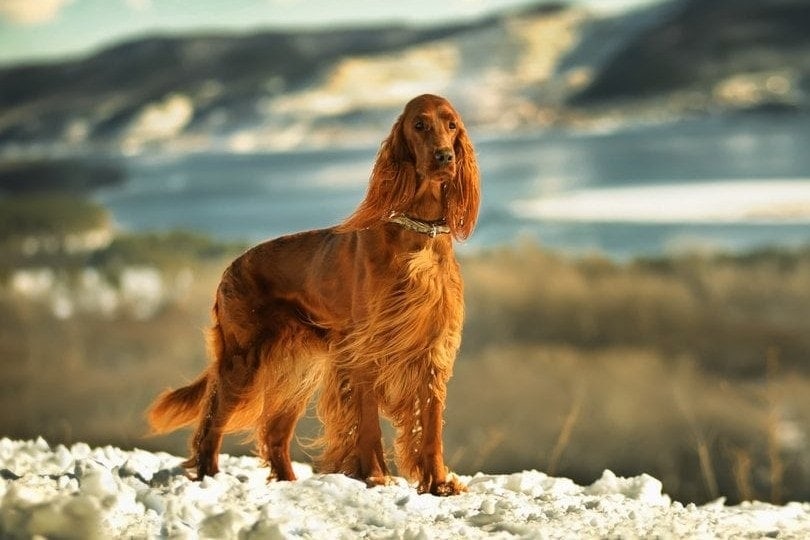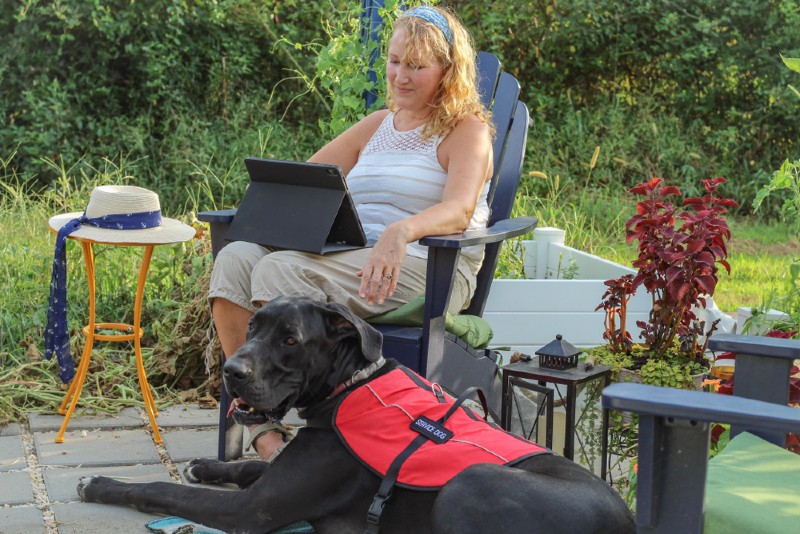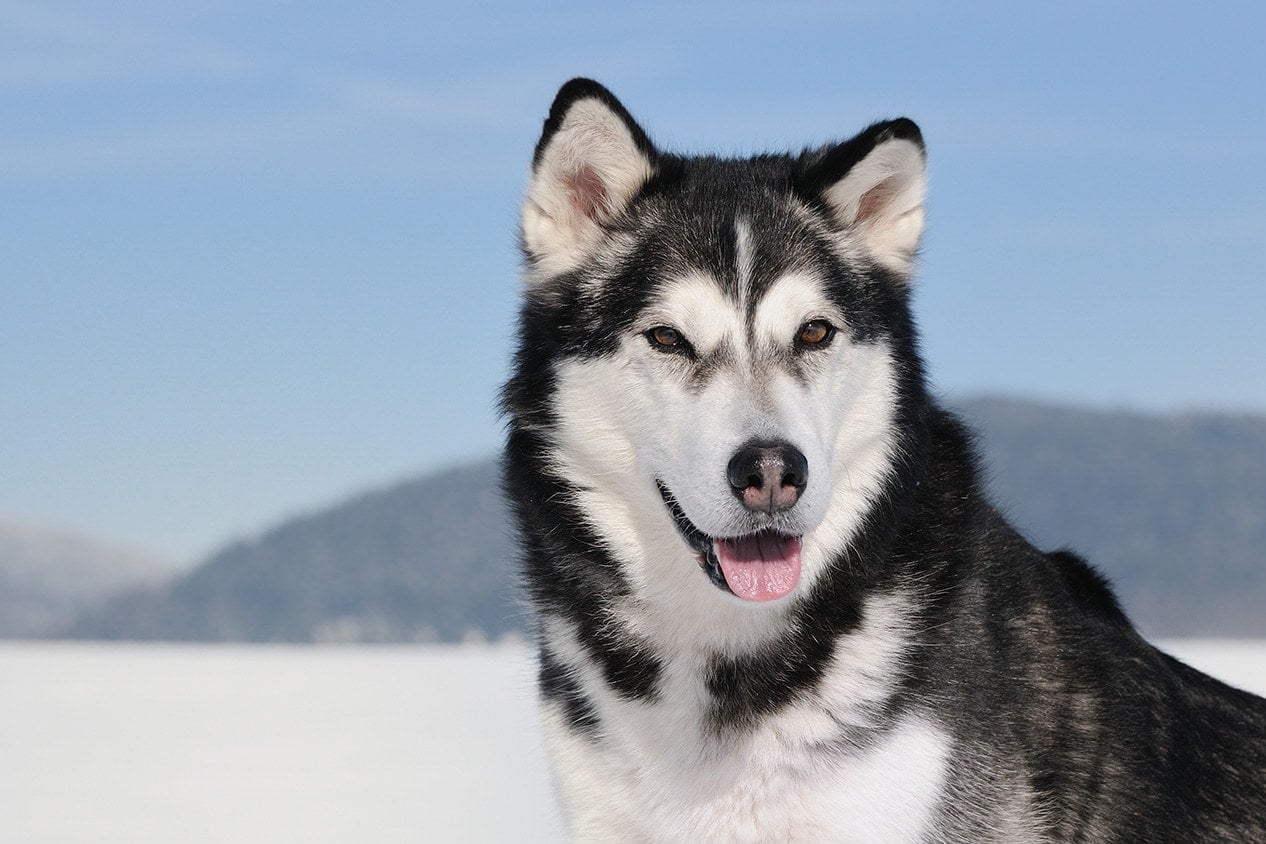9 Dog Breeds That Can’t Swim & Why (With Pictures)

Updated on
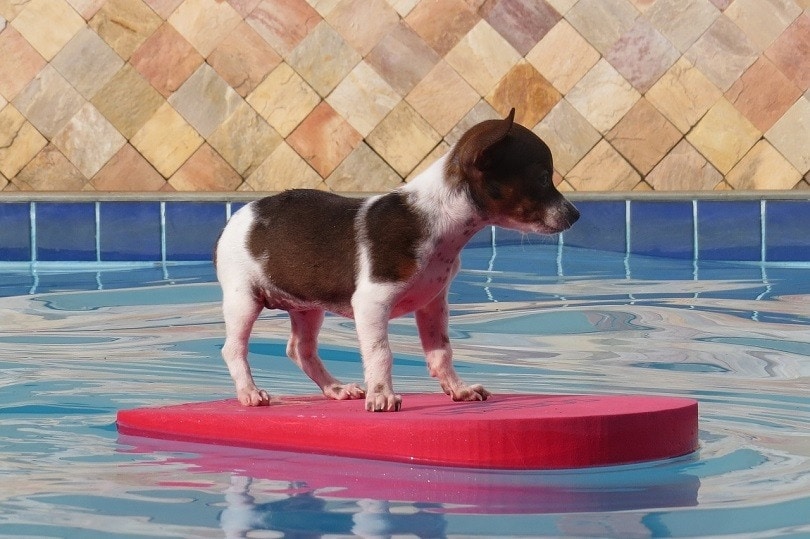
Most folks assume that all dogs love the water and are natural swimmers. Though all canines carry an instinctive ability to “doggy paddle,” this doesn’t always translate to all pooches taking effortlessly to water. There are a number of dogs that can’t swim naturally.
Dogs with short legs or disproportionately large heads simply cannot swim all that well, if so at all. While some breeds were specifically bred to hunt water birds and swim, other breeds just can’t, thanks to their anatomy and facial structure.
Pooches that have broad and flat faces, such as a Bulldog, have to position themselves upright while swimming to keep their mouth and nose above the waterline. If they are even partially submerged, it becomes nearly impossible for them to stay afloat. Dogs with extremely large heads have a similar burden to bear.
If you own a dog with stubby or short legs, such as a Dachshund or Corgi, their tiny legs cannot provide them with enough power to stay afloat.
If you’re wondering if your pooch can paddle or not, here are nine dog breeds that cannot swim.
The 9 Dog Breeds That Can’t Swim
1. Basset Hound
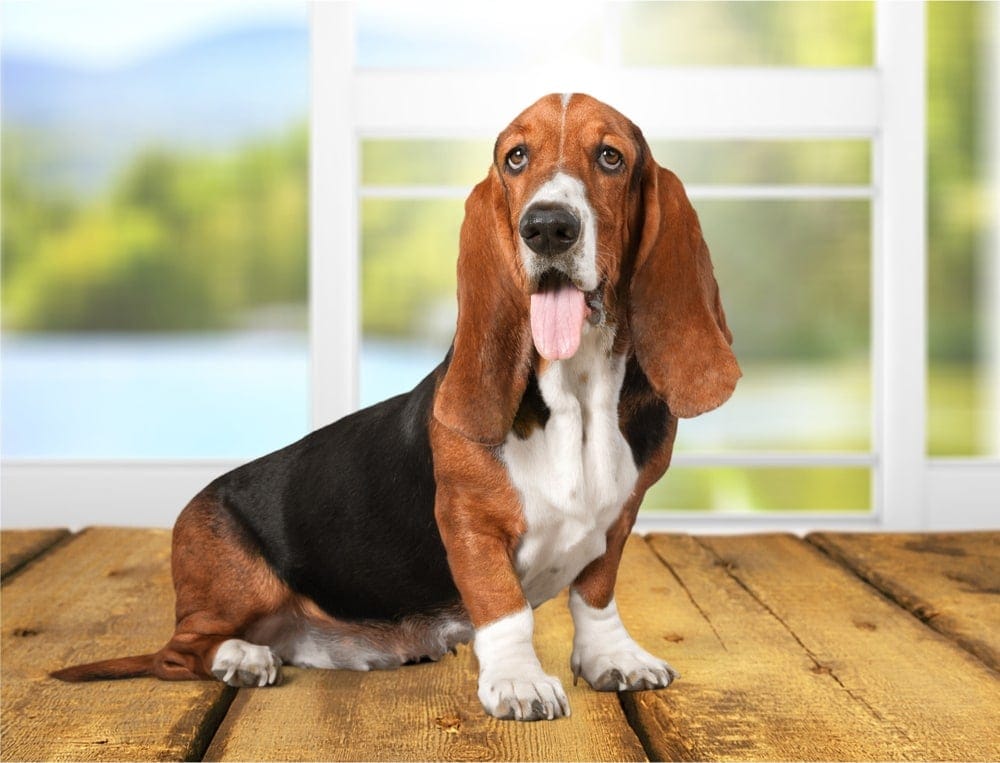
Sadly, your favorite droopy dog wasn’t made for the water. While Basset Hounds do hold the world record for having the longest ears, those ears, unfortunately, won’t work as paddles to keep them afloat in deep water. In fact, their thick bone structure, short legs, and bulky heads all add up to one result: no swimming for these big boys.
2. Bulldog
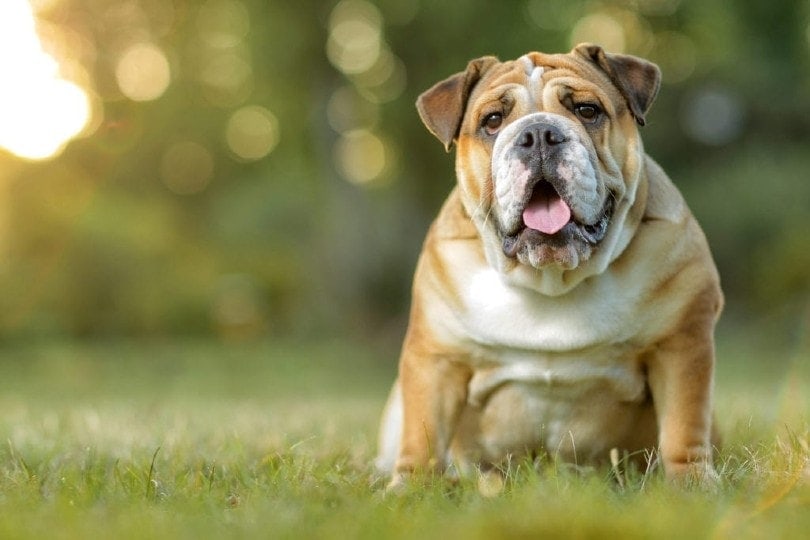
It’s pretty easy to assume that a Bulldog is averse to water. Their bowling ball-like proportions, little legs, and huge heads all equate to never being able to paddle quickly enough to support their own weight. Believe it or not, many reputable Bully breeders will even ask you for a home visit to ensure your backyard swimming pool is securely fenced in before allowing you to bring a puppy home. If you do opt to bring them to the beach, make sure your Bulldog is equipped with a doggy life vest to keep them safe and sound.
3. Boxer
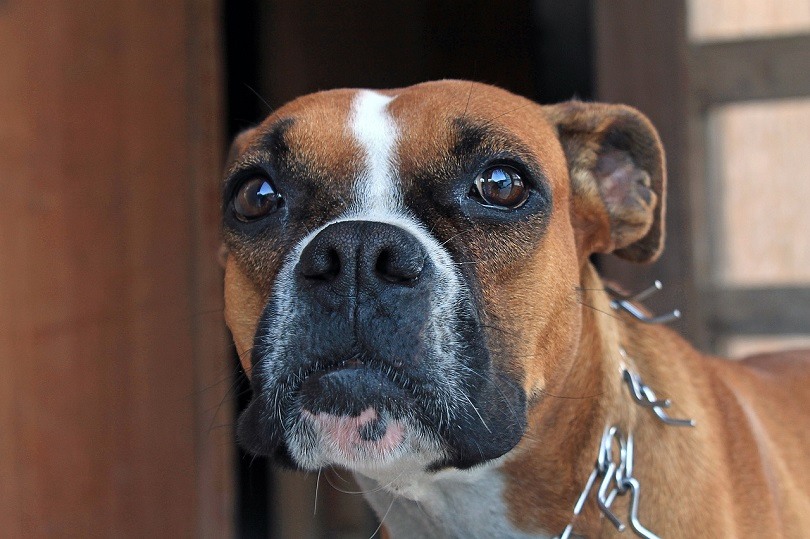
Though their leggy look makes them appear to be a natural swimmer, the Boxer is brachycephalic. Much like Pugs, their flat face and short muzzles mean that the Boxer breed will seriously struggle to keep their mouth and nose above water. Additionally, they may lose their breath if left swimming for a long period of time. Water play activities should be limited to a romp under the sprinkler, a jog along the shoreline, or a lounge in a shallow kiddie pool.
4. Chow Chow
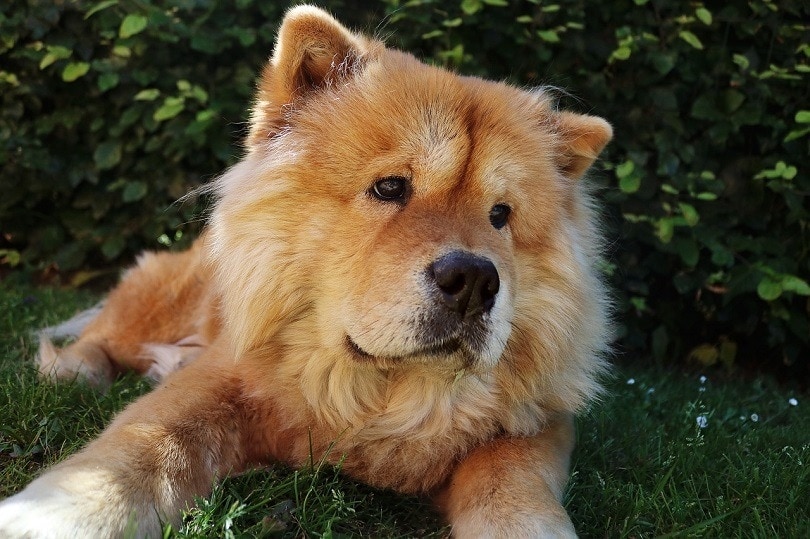
Due to their short legs and deep chest, the Chow Chow isn’t a great candidate for playtime in a pool. Their flatter muzzle can also make breathing tough if they are left to paddle for longer periods and their heavy, thick coat can become waterlogged.
5. Corgi
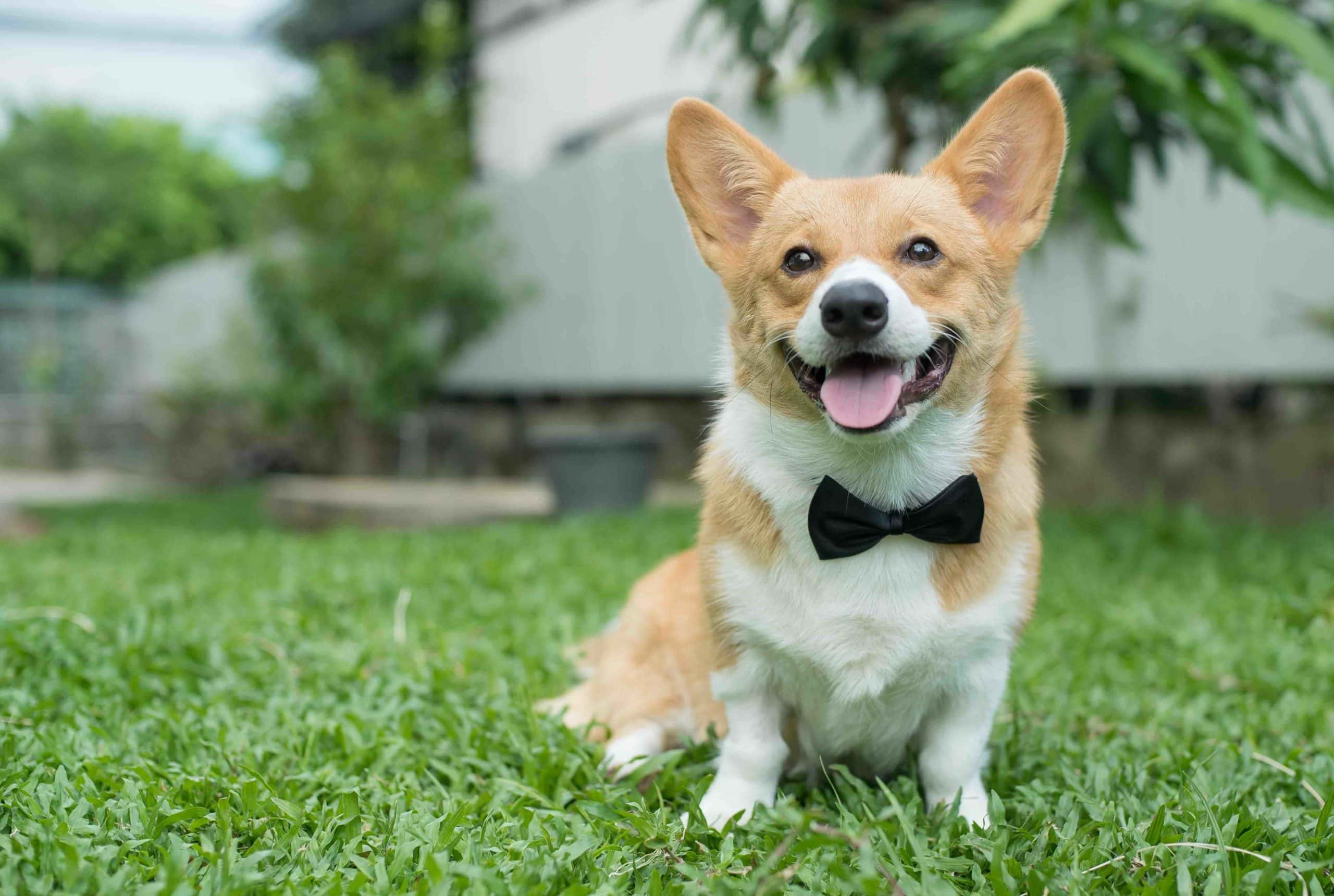
The cute little Corgi will never be an avid swimmer thanks to their barrel chest, dense body, and stubby legs. If you take them boating or to the beach, a life vest is crucial for them to wear.
6. Staffordshire Bull Terrier
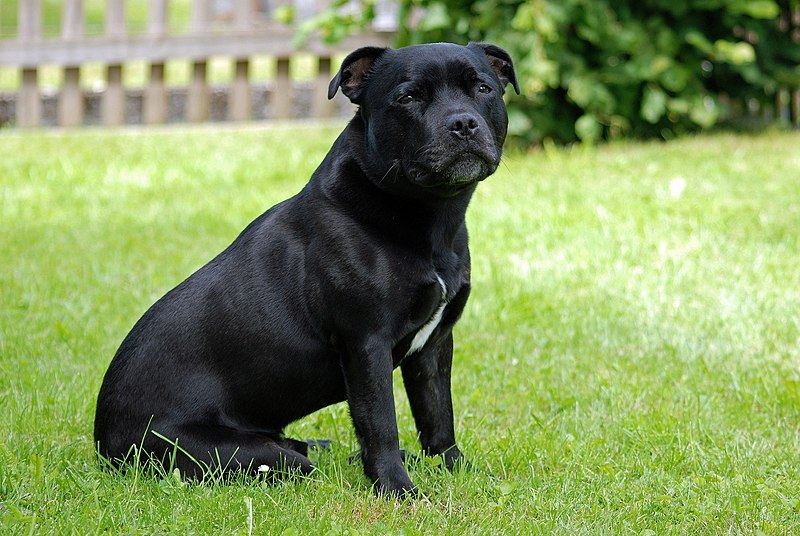
While the Staffordshire Bull Terrier is a natural athlete and loves to run and play, their solid body makes them heavy and not great at swimming. Top this off with an oversized head and legs that are on the shorter side, you’ll find that it can be a challenge for them to swim. Your best bet is to run them ragged on land.
7. Shih Tzu
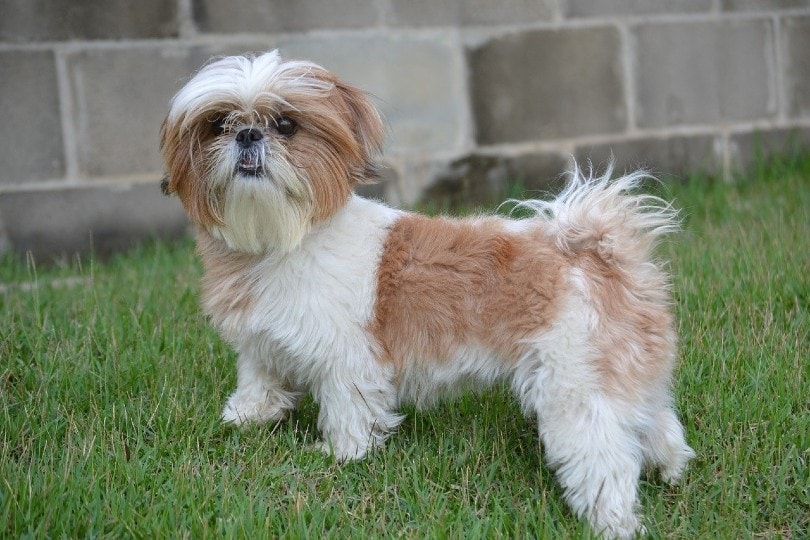
There is no dog less adaptable for water than the petite Shih Tzu. In cold water, their lithe and tiny frame can easily catch a chill, and their thick coat can become waterlogged. Add to that a tiny muscle and small legs, this feisty pooch would rather sit and view the fun from the safety of the sun-kissed beach.
- See Also: Can Shih Tzus Swim? Do They Like Water?
8. Pug

Much like the Bulldog, your Pug was not anatomically designed for water. With their smooshed-in face, deep chest, and stubby legs, the Pug is not equipped to keep themselves afloat for long periods of time. In order to breathe, they need to tilt their head upwards, causing their back end to tuck in and sink. If they are around pools or ponds, give your Pug the safety of a life vest.
9. Dachshund
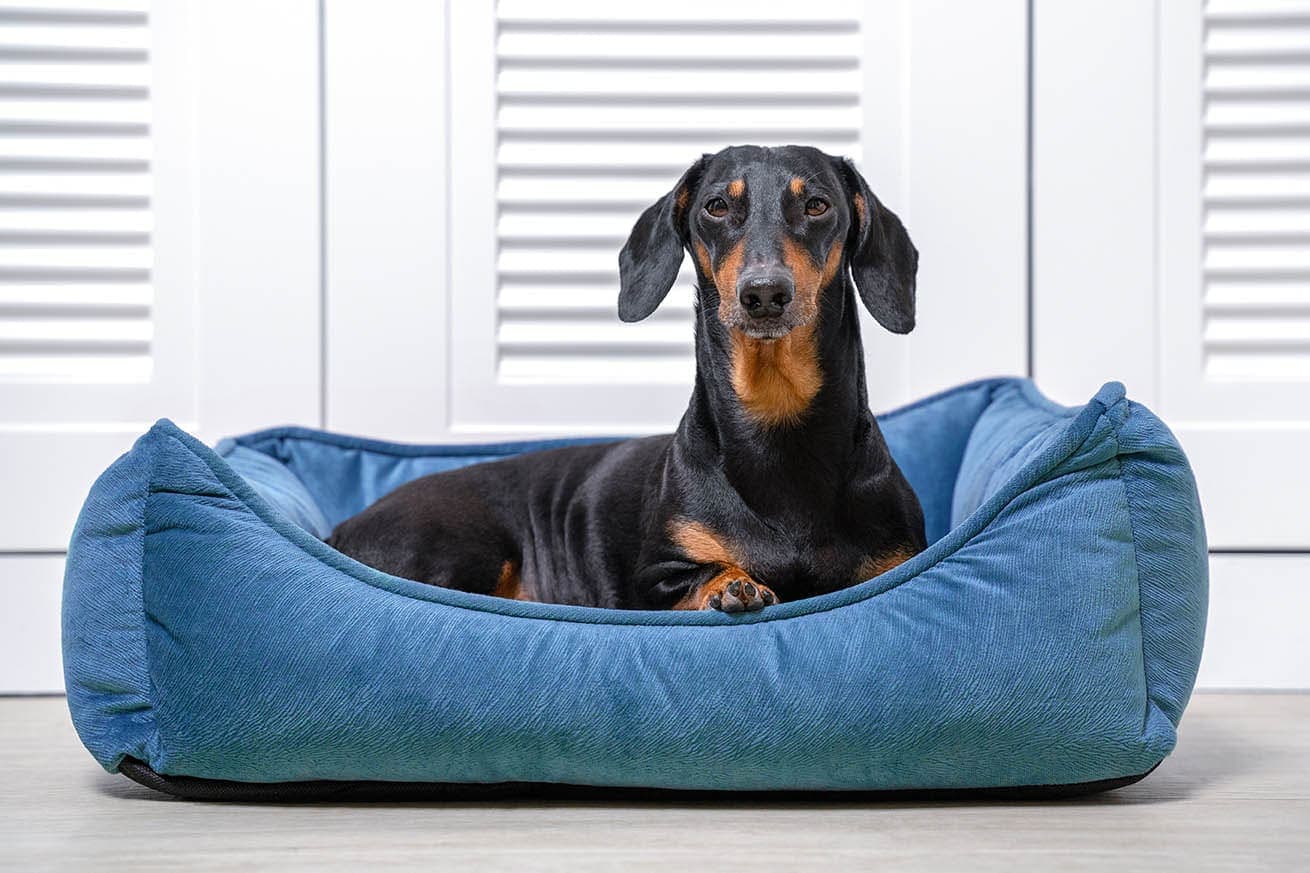
With short legs and a long, disproportioned body, the Dachshund is not suited for water. The small legs mean that they’ll have to work double-time to keep themselves afloat. Water play should be limited to a sprinkler or splash through the kiddie pool.
How to Keep Your Dog Safe Around Water
If you own one of the dog breeds that can’t swim, it’s critical to take the proper precautions to keep them safe and sound when around water.
If you take them to the beach or a lake or pond, keep a close eye on them and don’t let them off the leash. If you’re on a boat with your pup, make sure they are wearing an inflated doggy life jacket.
If you live by a large body of water, ensure that your yard is fully fenced-in and that there are no holes through which your dog can escape. If you have a pool, build a fence around it to guarantee your dog’s safety. When not in use, the pool should be covered.
Finally, you should consider enrolling in a canine first aid class or doing some online research to teach yourself dog CPR. This way, if an emergency does occur, you’ll be properly prepared to handle it.
While most dogs love water, some breeds just aren’t made to swim. Playtime should be kept to land for these fun-loving pups.
See also:
- 28 Guard Dog Breeds That Don’t Shed (With Pictures)
- 20 Most Affectionate Dog Breeds That Love to Cuddle (With Pictures)
Featured image credit: 85Miranda, Pixabay


